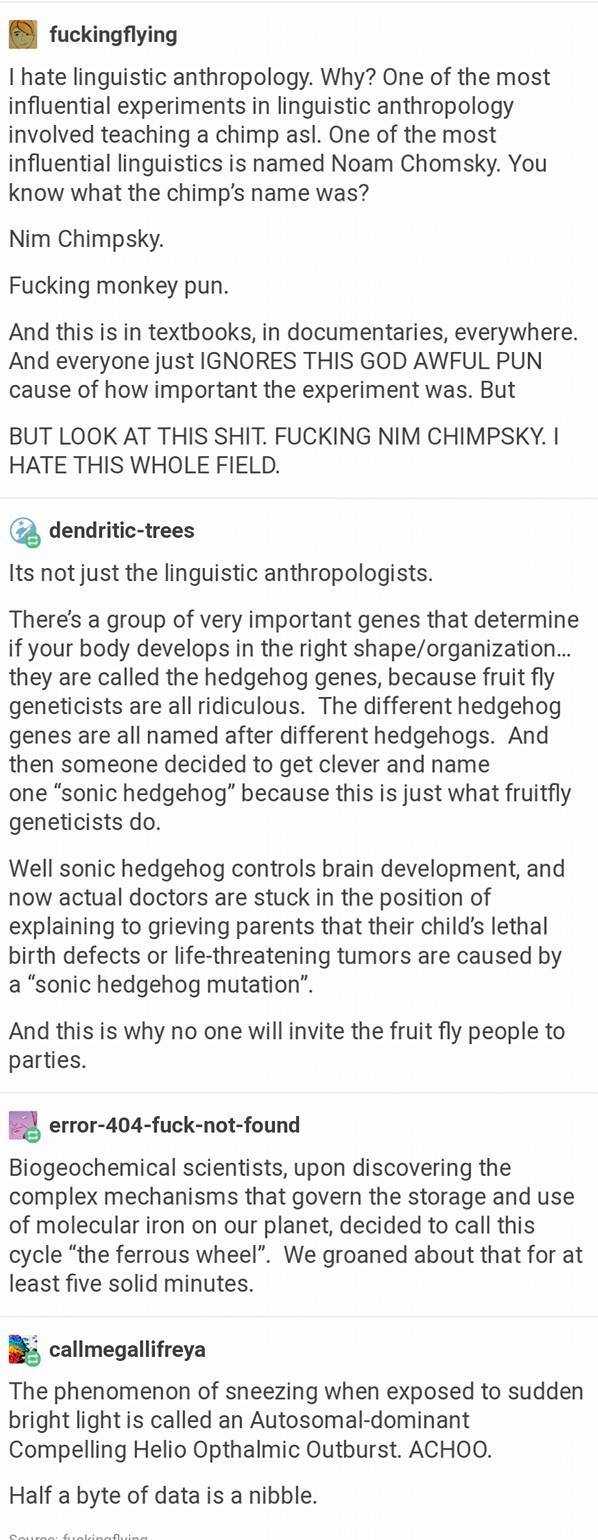this post was submitted on 13 Mar 2024
878 points (98.1% liked)
Science Memes
11523 readers
2451 users here now
Welcome to c/science_memes @ Mander.xyz!
A place for majestic STEMLORD peacocking, as well as memes about the realities of working in a lab.

Rules
- Don't throw mud. Behave like an intellectual and remember the human.
- Keep it rooted (on topic).
- No spam.
- Infographics welcome, get schooled.
This is a science community. We use the Dawkins definition of meme.
Research Committee
Other Mander Communities
Science and Research
Biology and Life Sciences
- [email protected]
- [email protected]
- [email protected]
- [email protected]
- [email protected]
- [email protected]
- [email protected]
- [email protected]
- [email protected]
- [email protected]
- [email protected]
- [email protected]
- [email protected]
- [email protected]
- [email protected]
- [email protected]
- [email protected]
- [email protected]
- [email protected]
- [email protected]
- [email protected]
- [email protected]
- [email protected]
- [email protected]
- !reptiles and [email protected]
Physical Sciences
- [email protected]
- [email protected]
- [email protected]
- [email protected]
- [email protected]
- [email protected]
- [email protected]
- [email protected]
- [email protected]
Humanities and Social Sciences
Practical and Applied Sciences
- !exercise-and [email protected]
- [email protected]
- !self [email protected]
- [email protected]
- [email protected]
- [email protected]
Memes
Miscellaneous
founded 2 years ago
MODERATORS
you are viewing a single comment's thread
view the rest of the comments
view the rest of the comments

This is somewhat clever when you know that the ‘++’ operator is the post-increment operator in C.
…except there is no ‘#’ operator in C or C++, so any interesting self-referential pattern breaks down here. The ‘#’ comes from musical notation, where a ‘#’ (sharp) note is played a semitone higher — and was chosen more for marketing purposes rather than scientists having an inside joke.
You could have also mentioned ‘D’, which is another “next iteration of C” independent of C++.
The # looks like two "++" stacked on top of one another
Exactly
The C programming language also descends from the B programming language (though B's lineage unfortunately goes to BCPL, not A)
pretty sure there's a D language, and i know there's R but that's not super related, obviously.
i'm just waiting for the ø programming language
R is partly based on S.
R is a wonderful programming language in the eyes of people who are bad at programming. And that’s not disparaging it, it’s just used by scientists and engineers more than programmers because nothing makes an anova take less work
# is two layers of ++, so the pattern is there. Whether that was originally intended or coincidence is another matter, but it works well enough that I suspect it was considered when picking names.
That feels like a significant reach — and every online reference I was able to find only talks about using ‘#’ in the musical notation sense, hence why the name of the language is pronounced “C-sharp”.